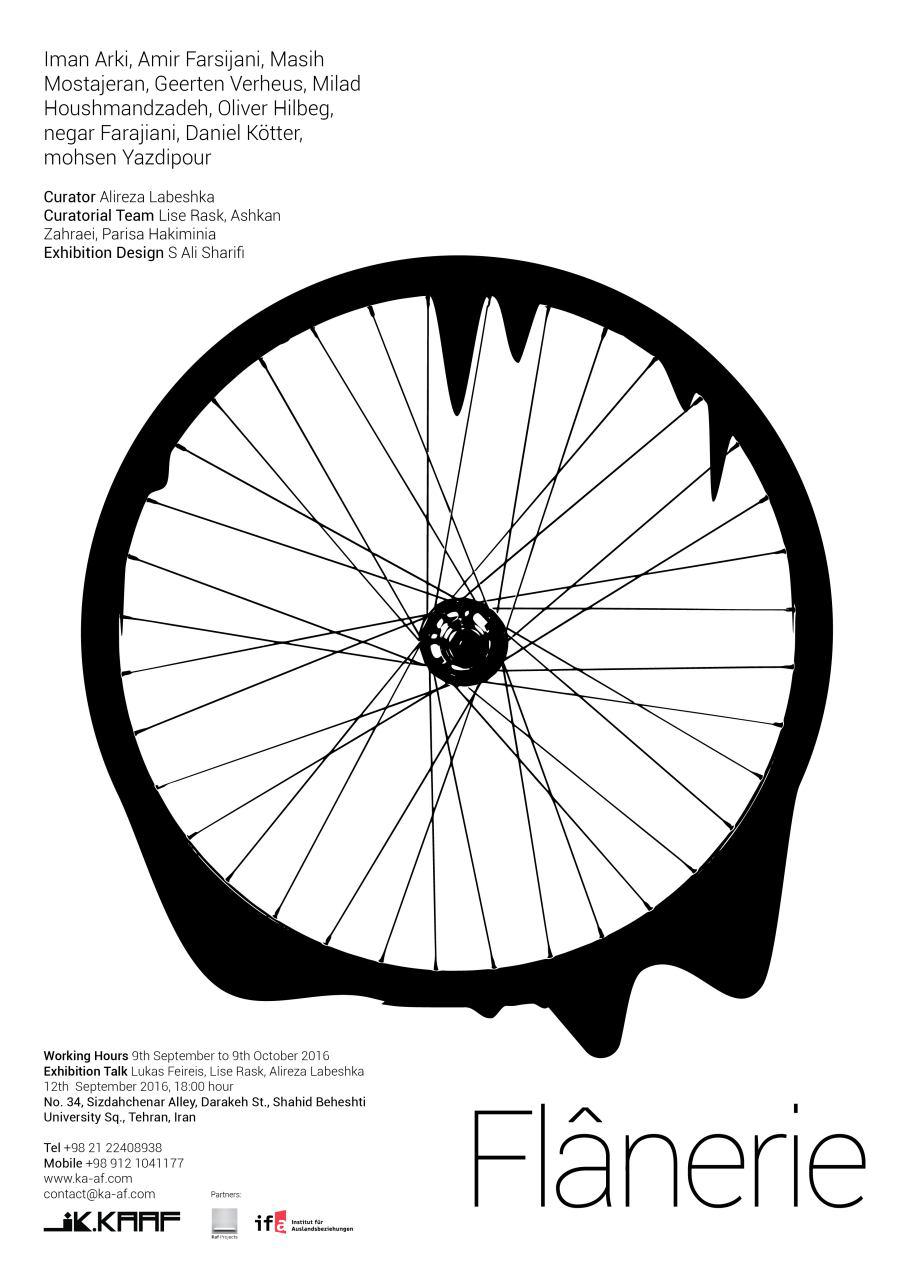Flanerie
Artists: Amir Farsijani, Mohsen Yazdipour, Masih Mostajeran, Milad Houshmandzadeh, Iman Arki, Oliver Helbig, Negar Farajiani, Geerten Verheus, Daniel Kötter
Curator: Alireza Labeshka
Curatorial Team: Lise Rask, Ashkan Zahraie, Parisa Hakiminia
September 9 – October 9, 2016

Exhibition Statement:
Maybe if Walter Benjamin had escaped from Nazi Germany to today’s Tehran instead of Paris, he would not only have been faced with blatant aspects of capitalism, and could have published his same Arcades Project here too, he would have also been faced with an amalgam of unbridled urban policies and again would have perhaps preferred European capitalism and his same Paris with its newly widened streets and unpolluted air to the tropical capitalism of the countries of the “Global South”. For Benjamin whose “flaneur” walks freely around the city and collects his mental images from all around and even at times enjoys revelling in the world of artificial capitalist enjoyments and meanwhile recognizes the volatilities of the market in the city and traces the process of fetishism of commodities in shopping arcades and neon signs, revelling in a city in which 5000 people die each month in result of air pollution could be reminiscent of the very country from which he escaped.
In spite of sharing in the Benjaminian concept of flaneur in reification (Verdinglichung) of their mental images of the city, the Tehrani artists taking part in this exhibition have in no way benefited from the creative idleness of Parisian flâneurs while living in a city which contains 550 kilometers of urban highways, and for them Tehran is more a location for transit, and even that via private passenger vehicles, rather than a location for sauntering and interaction. With regard to this very characteristic of its being “volatile”, they have portrayed today’s Tehran in relation to the absence of its public spaces, and neglecting the importance of presence in the city and its outcomes with all its difficulties that have even become the theme of the works or they have presented solutions for interfering with the public scene. In contrast, the foreign artists have subconsciously taken a comparative approach to weighing up Tehran more against what goes on in other cities of the “Global South” and this comparison has at times been formed through the channel of collaged visual narratives (perhaps) in search of discovering a structure, and sometimes a symbolic language hints at the very possibility of such new/strange urban forms.


